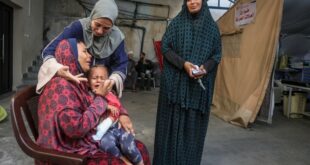
OVER the past few months, a common theme among institutions concerned with combating climate change is that there must be a substantial increase in private sector investment in climate adaptation and mitigation. Public sector resources coursed through various institutions such as the UN-managed climate funds, the World Bank, the Asian Development Bank and other multilateral development banks (MDBs) are simply not enough to cover the enormous amount that is needed to protect vulnerable countries and reduce greenhouse gas emissions and other environmental impacts.
The challenge this poses to climate-vulnerable countries like the Philippines that need funding for climate adaptation is that attracting private sector investment is an entirely different value proposition than that for institutional funding. If this challenge cannot be overcome, the negative impacts on communities and people may become unmanageable.
Climate adaptation refers to measures to help populations cope with the impacts of climate change, while mitigation refers to measures intended to reduce those impacts. As the Philippines is not a significant contributor to greenhouse gas emissions but is highly vulnerable to climate change impacts, adaptation is the chief concern here. Some simple examples of climate adaptation measures that might be implemented include flood control projects, seawalls and mangrove planting to protect against stronger storm surges, and relocating at-risk populations to safer areas.
All of this takes money, of course, a lot of it. At the landmark Paris climate summit in 2015, a target of $100 billion per year was agreed, but it has since been recognized that even this figure is woefully inadequate. According to estimates from the MDBs, who all seem to agree on the question, the actual funding need for both adaptation and mitigation is somewhere between $1 trillion and $1.6 trillion per year through at least 2030, and probably beyond. Thus, the emphasis on calls for more private sector investment, since that is where those vast amounts can be found.
According to World Bank executives at a climate finance conference held in Spain last week, however, the world is falling short on investments in technology for climate adaptation because of a lack of metrics that can measure clear financial returns or help investors quantify the impact these investments have on affected communities. Investment in mitigation technology, things like renewable energy systems and electric vehicles, which produce more measurable returns and can even be profit-generating, is not a problem, but adaptation investment is being avoided because, as one World Bank executive explained, it is seen by investors as costly if they cannot foresee the net benefits of their investments. As a result, investments in mitigation, which primarily go to developed countries where the most mitigation is needed, currently outweighs adaptation investment by about 10 times, whereas investment in the two purposes ideally should be approximately equal.
Developing a global set of standards to measure adaptation impacts has proved difficult, and in the view of the World Bank and its peers, might be impossible due to differences in the needs for different countries. Therefore, it becomes critical for the Philippines to prioritize the development of a clear and applicable set of standards for its own adaptation needs and create a value proposition for prospective investors in adaptation. This means defining exactly what constitutes a climate adaptation-relevant investment, and defining exactly what outcome in quantifiable terms that investment is supposed to achieve. It is a difficult undertaking, but there are examples — Colombia is one cited by the World Bank — of countries whose models Philippine policymakers can study and adapt to our needs.
*****
Credit belongs to : www.manilatimes.net
 Atin Ito First Filipino Community Newspaper in Ontario
Atin Ito First Filipino Community Newspaper in Ontario






